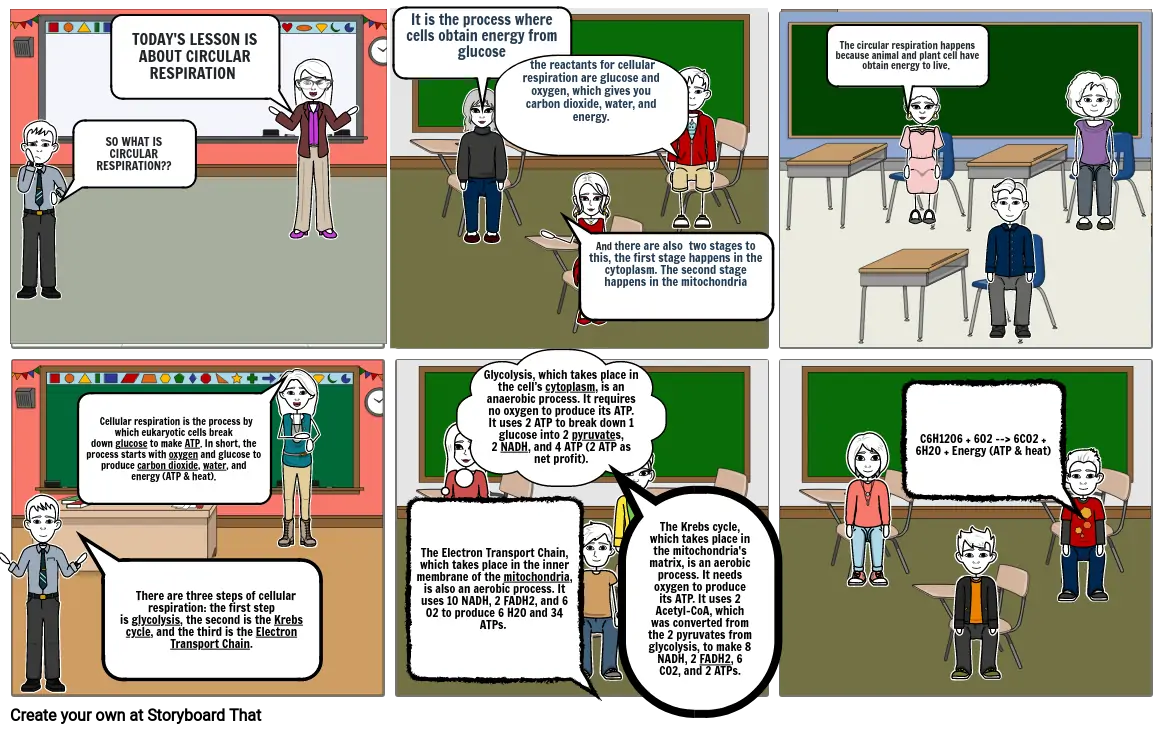CIRCULAR RESPIRATION

Storyboard Text
- SO WHAT IS CIRCULAR RESPIRATION??
- TODAY'S LESSON IS ABOUT CIRCULAR RESPIRATION
- It is the process where cells obtain energy from glucose
- the reactants for cellular respiration are glucose and oxygen, which gives you carbon dioxide, water, and energy.
- And there are also two stages to this, the first stage happens in the cytoplasm. The second stage happens in the mitochondria
- The circular respiration happens because animal and plant cell have obtain energy to live.
- There are three steps of cellular respiration: the first step is glycolysis, the second is the Krebs cycle, and the third is the Electron Transport Chain.
- Cellular respiration is the process by which eukaryotic cells break down glucose to make ATP. In short, the process starts with oxygen and glucose to produce carbon dioxide, water, and energy (ATP & heat).
- The Electron Transport Chain, which takes place in the inner membrane of the mitochondria, is also an aerobic process. It uses 10 NADH, 2 FADH2, and 6 O2 to produce 6 H2O and 34 ATPs.
- Glycolysis, which takes place in the cell’s cytoplasm, is an anaerobic process. It requires no oxygen to produce its ATP. It uses 2 ATP to break down 1 glucose into 2 pyruvates, 2 NADH, and 4 ATP (2 ATP as net profit).
- The Krebs cycle, which takes place in the mitochondria's matrix, is an aerobic process. It needs oxygen to produce its ATP. It uses 2 Acetyl-CoA, which was converted from the 2 pyruvates from glycolysis, to make 8 NADH, 2 FADH2, 6 CO2, and 2 ATPs.
- C6H1206 + 6O2 --> 6CO2 + 6H2O + Energy (ATP & heat)
Over 30 Million Storyboards Created

